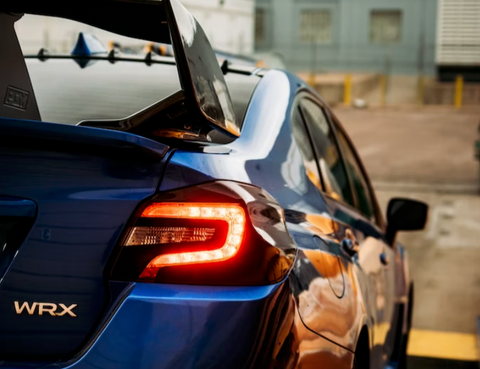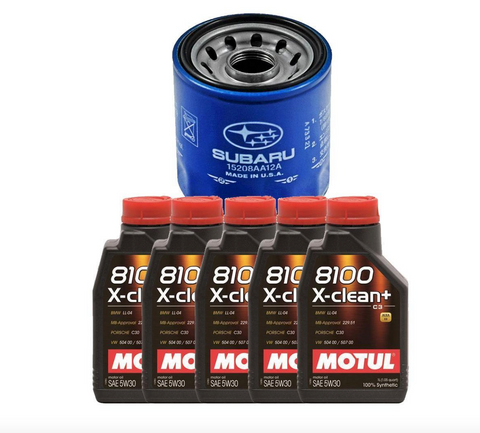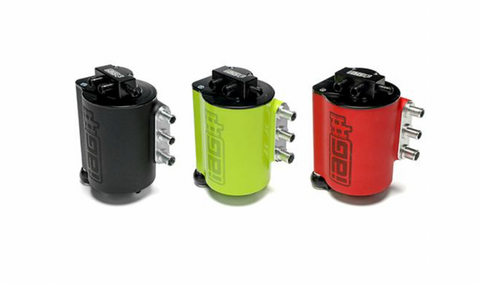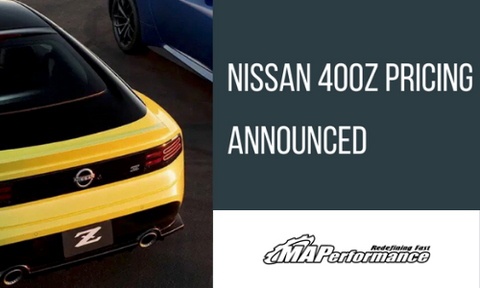
Today we're going to be talking about common WRX problems and typical WRX maintenance, specifically the 3rd gen WRX. As these cars started getting popular–both the sedan and hatchback–kids started picking these cars up and putting them to the test–zooming around corners hard, sliding around in the snow, taking them to the drag strip, and doing every modification under the sun. Over time, these cars developed their own set of unique issues that started popping up. So whether you own one or you're looking to buy one, it's important to look out for some maintenance and issues involved with this car.
WRX oil change interval
It should go without saying that a regular oil change is one of the most important WRX maintenance tasks. It's really important that you stick to the Subaru OEM fluid specifications, whether it's the amount of mileage you're putting on them or the weights of the oil that you're putting in. These cars are extremely sensitive to changes in fluid dynamics, so Subaru recommends using synthetic oil for their vehicles, as it provides better protection for the engine than traditional oils. We urge that you stick to the factory service interval of the oil at about 3,000 miles. It just ensures that you’re going to get the longest life out of your factory engine. In addition, it is important to change the oil filter every time you change the oil, as this will help to remove any dirt or debris that may be in the oil. By following these simple guidelines, you can help to ensure that your vehicle's engine stays healthy and runs smoothly for many years to come.

Subaru WRX transmission fluid change
The drivetrain is a vital part of any vehicle, and it is important to ensure that it is properly serviced in order to avoid costly repairs or replacements down the road. One way to extend the life of your transmission is by changing the fluid regularly. Subaru recommends changing the fluid in the front and rear diffs, as well as the transmission, every 30,000 miles. It is essential to use only the recommended fluid viscosity from Subaru, as this will help to ensure optimal performance and longevity.
What is an air-oil separator?
While we're on the subject of WRX maintenance for the oiling system, we wanted to go over a known issue in the Subaru world with the PCV system. When you start to raise the power on these cars, it's very obvious that the factory system isn't up to the task of separating the oil vapors from the crankcase and ensuring that you don't have any issues. The result is that you can get a build-up of oil in your intake system, which can lead to all sorts of problems like carbon build-up, decreased performance, and even engine damage. Ultimately, it's something to be aware of if you're planning on modding your car - you may need to upgrade your PCV system along with everything else. Subaru aftermarket manufacturers have developed something called an "air-oil separator." What this does is allow for crankcase vapor and pressure to leave the engine to go into a separate canister. This separates water and oil, alleviates crankcase pressure, and then returns that oil back into your oiling system. This process ensures that the oil is clean and free of any dirty deposits or water accumulation that might be inside the oiling system. In other words, the air-oil separator helps to keep your engine clean and running smoothly. The factory positive crankcase ventilation (PCV) system in a Subaru WRX can become overwhelmed with excess crankcase pressures. This can allow oil to get into places where it doesn't belong, leading to the determination of other hoses and other parts in the oiling system in general. An air-oil separator is important because it helps keep air, oil, and water separate in these systems. Using an air-oil separator will ensure that you have maximum longevity in your WRX.
Grab the air-oil separator here

Cylinder 4 cooling mod benefits
Taking your WRX to the track is a great way to get the most out of its performance capabilities. However, high engine temperatures can quickly become a problem, leading to damage and reduced efficiency. The cylinder 4 cooling mod is an essential upgrade for any WRX-owning track-day enthusiast, as it helps to ensure that coolant is quickly circulated throughout the engine. This prevents boiling and hot spots, while also helping to improve overall performance. In addition, the mod is relatively simple to install, making it a great way to get the most out of your track days.

Note - You may experience WRX issues if you don’t update the calibration
We wanted to take this time to note that it is crucial to make sure that your calibration is updated when you make changes to your car or buy new parts. Subarus are sensitive to changes within the engine and parts that are bolted on them. Contacting a local calibration expert will help ensure that when you make changes to your car, everything is up-to-date and matches what is on the car. This will help keep your car running smoothly and avoid any WRX maintenance issues.
Are WRX’s expensive to maintain? – Don’t believe what you read elsewhere
When it comes to modified Subarus, there is a lot of misinformation on the internet. One common misconception is that turbocharged models are prone to head gasket failures and other Subaru WRX engine issues at stock or near-stock power levels. However, this is primarily an issue with naturally aspirated engines. Another concern is that modified Subarus will be plagued with a multitude of issues and that you shouldn't get into heavy modifications. But ultimately, with the right parts and WRX maintenance, modified Subarus can be extremely rewarding cars to own and can be fairly reliable.
Obviously, when you put more power down on the Subaru WRX there are going to be issues that arise simply because the factory system isn't up to the task. Custom gear sets and axles are one way to upgrade a transmission to cope with more power, but they are not typically found on daily driver vehicles. As such, it is important to be aware of the limitations of your car's transmission before making any modifications.





Comments (0)
There are no comments for this article. Be the first one to leave a message!